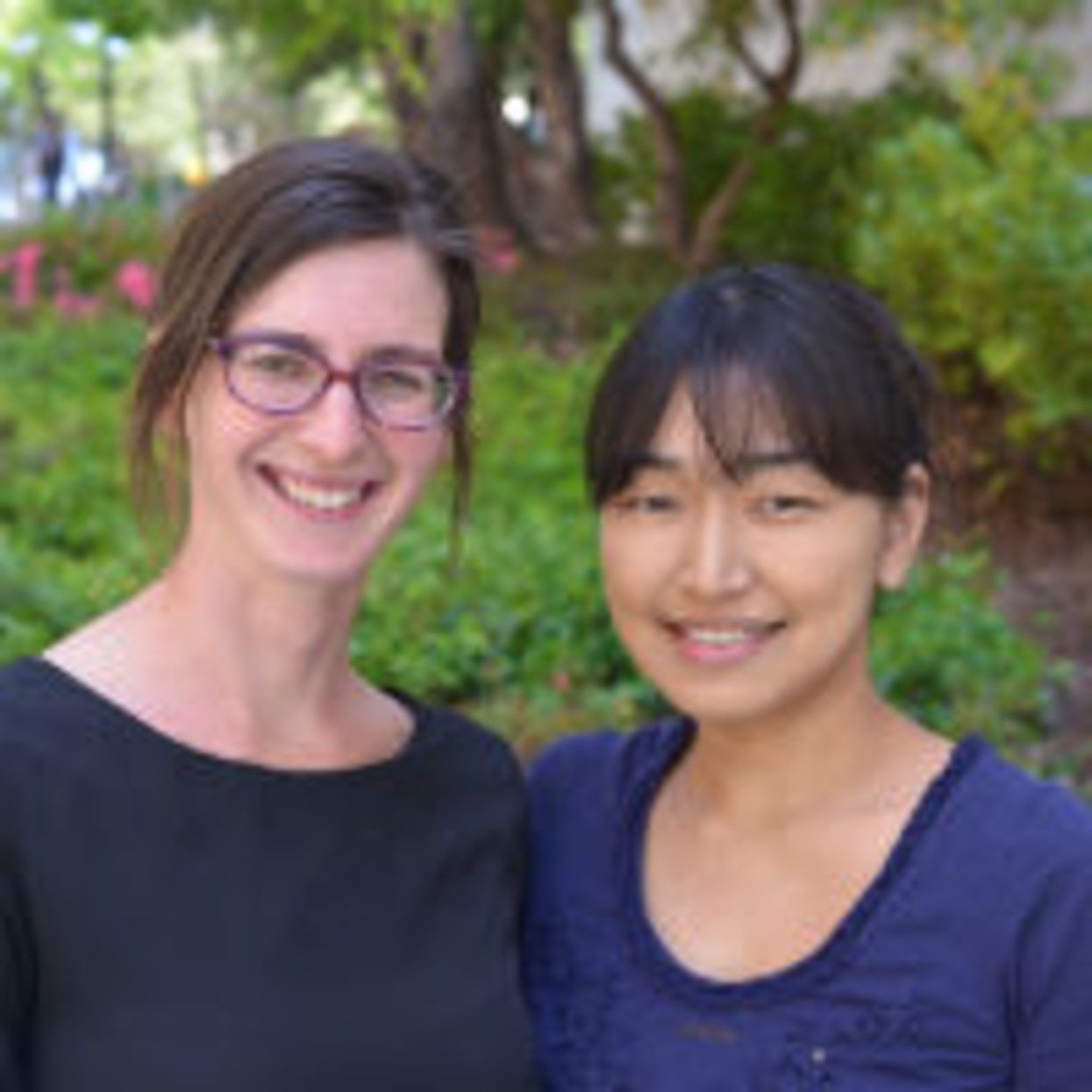Meet Kimiko Ryokai and Laura Devendorf

The Berkeley Center for New Media is turning 10! To celebrate, over the next ten months leading up to our birthday party on September 25th, 2014, we’re sharing ten stories of BCNM’s life so far. This month, hear how BCNM professor Kimiko Ryokai and graduate student Laura Devendorf research tangible interfaces to in the hope of providing users with insightful, grounded experiences.
The speed with which screens have become ubiquitous has thrust new attention on user interaction design. How the interfaces of our tools determine our interactions is now a critical and growing conversation. BCNM faculty member Kimiko Ryokai and graduate student Laura Devendorf are at the forefront of this dialogue.
With a background in Linguistics and Psychology, Kimiko received a Masters in Science and a Ph.D. in Media Arts and Sciences while working at the Massachusetts Institute of Technology’s MediaLab. Upon graduating, she turned to commercial design consultancy with the innovation and design firm IDEO, but soon yearned for the greater freedom and experimentation of academia. She joined UC Berkeley’s School of Information and the Berkeley Center for New Media aiming to examine how design influences our behaviors. This broad mandate has allowed Kimiko’s research to cover a vast array of topics, from pre-literate child development to informational overlays on fields of vision. At the heart of her studies, however, is the question of how the aesthetics and structure of an interface molds user interaction, and how tangible and interactive interfaces woo the non-technical.
Laura began her undergraduate career at UC Santa Barbara studying engineering, but quickly switched to Studio Art. While working for sustainable apparel designer Stewart+Brown, she became intrigued by the artistic nature and possibilities inherent in computer coding. She eventually undertook a second degree in Computer Science, before enrolling at UC Berkeley to study design at the Information School and BCNM. She’s had the opportunity while here to study how to create symbols that embody experiences and emotions, and how to build structures that engender specific feelings and interactions in a community. At a recent internship with Otherlab, Laura experimented with reimagining complex 3D objects as bundles of simpler shapes and figures.
Together, Kimiko and Laura have collaborated on AnyType, an application that takes photographs and generates unique typfaces from portions of these images. The application is not just entertainment — it creates a new awareness of the environment among its users, encouraging consumers to notice the geometric landscape consciously.
The two are also spearheading another project entitled “Situated Making,” centered on a portable 3D printer that uses everyday material. The printer takes inspiration from both the automatized features of an ordinary 3D printer and the manual input of traditional handicraft to create a hybrid model that allows for creative expression not immediately possible through either conventional mode of production. Rather than following the ‘success-failure’ orientation of most 3D printing, a perspective that views the creative process as the final product meeting the design specifications of its input, the printer becomes a creative device in which the process of creation is equally as important as the end results. Failures are suddenly as interesting as successes with iteration. Kimiko and Laura share an interest in dynamic installations and plan to build the printer so that users can create temporary structures, offering a new understanding of both creativity and the built environment. Some structures they build they intend to design with planned eventual decay — a further deviation from standard 3D printing production that will encourage a greater appreciation for the physical, immediate world.
Kimiko and Laura hope their research will not only provide insight into how the composition of an interface affects users’ interactions, but also promote a more grounded, physically aware use of interfaces for new technologies. They credit the theory and critical analysis at the core of BCNM with supporting their interdisciplinary research, which values a thoughtful, analytical approach to innovation, and therefore our increasing reliance on smart, often screen-based tools.
Interested in creating a new fund that encourages the study of technology and creativity? Or a grant to assist the prototyping of innovative devices? Support BCNM in its mission to bring together the humanities, arts, and sciences to critically analyze and shape developments in new media from cross-disciplinary and global perspectives by donating today. If you have other ideas to help develop the future of BCNM, please contact us as well.
